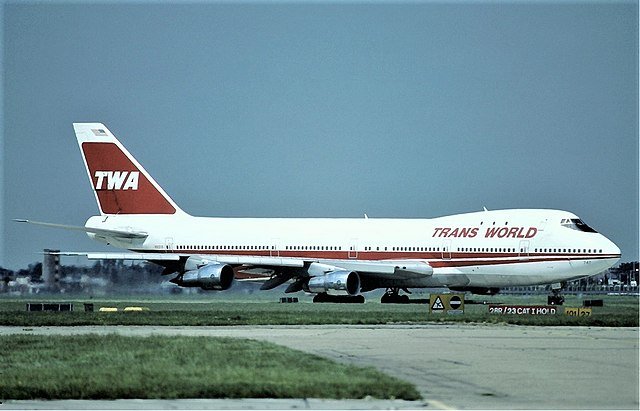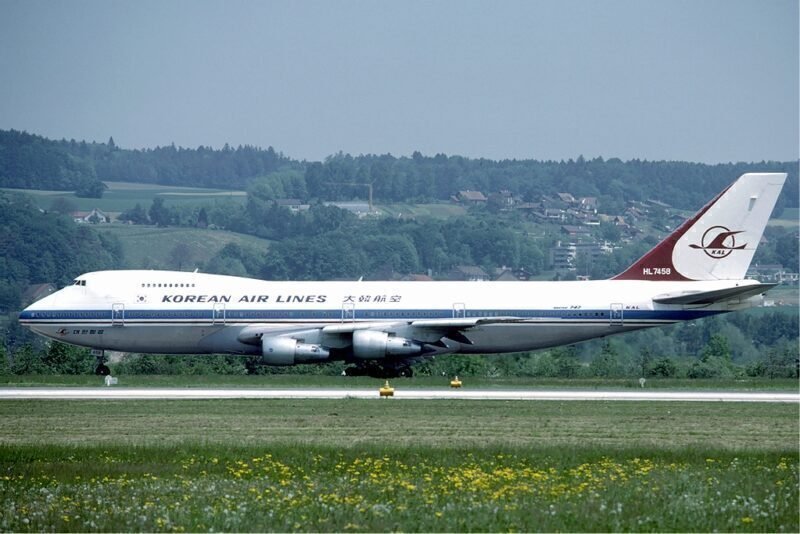The first 747
The very first generation of the Boeing 747 was the 747-100. Boeing brought it to the market as a cargo transport first for oceanic flights (it was originally a failed bid for a military aircraft), but quickly airlines realized the opportunity to use the aircraft to bring flying to the masses.
This new plane would have double the seating capacity of a 707 and fix the problem of airport capacity.
Pan Am, the first airline to operate the 747-100, fit out the aircraft to seat 347 passengers in three classes (40 in first class, 48 in Clipper class (a prelude to business class but not quite the same, and 259 in economy). Interestingly, the seat map from the era shows that half all the seats were divided up into smoking and non-smoking sections (and the dreaded no-movie seats).
Boeing sold 205 first-generation Boeing 747s. With a range of only 4,620 nautical miles or 8,560 km, they had the most limiting distance of all the aircraft in the series and would only be deployed in the Americas and on some Atlantic routes. 747 travel would not take off in a big way until the next generation.

Second-generation – 747-200
The second generation of the Boeing 747 was the first one to realize the true potential of the platform. With more powerful engines to push the aircraft to a range of 6,560 nautical miles (12,150 km), the aircraft could now perform Pacific routes for Asian destinations and Australia.

The aircraft would have the configuration to carry the same amount of passengers as the 747-100, although it did feature many changes to the upper deck.
Boeing sold 393 Boeing 747-200 varients.
Third-generation – 747-300
The third generation of the jumbo jet program is the black sheep of the family and highlights just how widespread the previous version was. The 747-300 didn’t really have much in the way of substantial improvement and was only on sale for a short amount of time (two years) before Boeing introduced the 747-400. Boeing would offer customers who had ordered the 747-300 near the end the chance to upgrade to the 747-400.
The 747-300 had an upgraded passenger capacity (by around 100 passengers) but less range than the 747-200 series.
Overall, Boeing sold 81 747-300 aircraft.

Fourth-generation – 747-400
The fourth generation, or the greatest Boeing 747 generation, has stood the test of time and is likely what many readers associate with the 747 series. It could fly 416 passengers (on average, depending on fit-out) to a range of 7,670 nautical miles (14,200 km).
Boeing would sell 694 Boeing 747-400 aircraft, and nearly every single flag carrier airline in the world would utilize the type. Unfortunately, today this aircraft is on the chopping block and has been retired from airlines such as Qantas and British Airways.

Last generation – 747-8
The final version of the Boeing 747, the -8 series, combines the 747-400 and the technologies developed during the 787 programs (hence the eight in the name). However, orders have been sluggish for the type, with only 138 so far.
The 747-8 is the first in the series to extend its length beyond the original 747-100 design and can carry 467 passengers 8,000 nautical miles (15,000km).

In the end, the 747 series has run its course, and the future belongs to newer design of aircraft. A lesson that perhaps Boeing should take to its other flagship series, the Boeing 737 – but that’s a topic for another day.
What do you think? Let us know in the comments.













